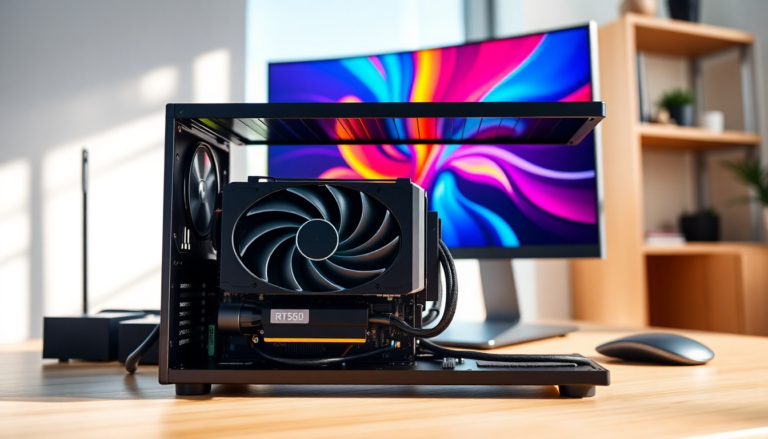Argomenti trattati
Imagine a world where high-performance gaming is no longer restricted to bulky setups. The Nvidia GeForce RTX 5060 has entered the scene, and while it may lag behind its high-end counterparts in raw power, it shines in energy efficiency. Zotac, always a pioneer in crafting solutions for compact systems, is stepping up with its new low-profile and Mini-ITX designs. These smaller graphics cards are not just a necessity; they’re a revolution for those of us who dream of powerful machines without sacrificing space.
The allure of compact graphics cards
In recent years, the demand for compact systems has skyrocketed. More gamers and tech enthusiasts are looking for ways to maximize performance without the bulk. I remember when I had to choose between performance and portability for my gaming rig; it was a tough decision. With the introduction of the GeForce RTX 5060, Zotac is addressing this very issue. Imagine fitting a robust graphics card into a case that was previously considered too small. The RTX 5060 opens up possibilities for those who thought gaming was limited to traditional desktop setups.
Specifications that impress
Let’s dive into the nitty-gritty. The Zotac low-profile GeForce RTX 5060 and the Mini-ITX variant are both powered by Nvidia’s GB206 GPU, which boasts an impressive 3840 CUDA cores. Each card is equipped with 8 GB of GDDR7 memory and a 128-bit interface, mirroring the capabilities of larger models. However, what’s notable here is the thoughtful design: the Mini-ITX version offers four display connectors, while the low-profile version has three. This difference might seem minor, but for those of us who juggle multiple displays, it’s a significant factor.
Cooling solutions designed for compactness
Cooling has always been a crucial aspect of any gaming setup. Zotac understands this well and has equipped the Gaming Mini-ITX GeForce RTX 5060 with a sophisticated single-fan cooling system featuring multiple heat pipes. This design is a testament to how far we’ve come in terms of technology. In contrast, the low-profile card sports a dual-slot triple-fan cooler. With a total board power of 145W, this cooling solution is expected, but I can’t help but feel a twinge of nostalgia for the days when gaming components were more straightforward.
Power needs and compatibility
As we all know, power consumption can be a dealbreaker. Zotac has equipped both graphics cards with an eight-pin auxiliary PCIe power connector, ensuring compatibility with a wide array of systems while maintaining efficiency. This foresight allows users to upgrade their compact systems without worrying about power constraints. It’s a clever move, especially when you consider how demanding modern games can be. The engineering behind these graphics cards reflects a deep understanding of current gaming trends and user needs.
Market expectations and pricing
With Zotac planning to launch its low-profile and Mini-ITX versions of the GeForce RTX 5060 this summer, many are left wondering about the pricing. Will they stick to the MSRP of $299, or will they capitalize on the rarity of compact graphics cards? As reported by industry insiders, there’s a chance these could come at a premium. But, let’s be honest—when was the last time we saw a compact graphics card that didn’t come with a steep price tag? It’s a gamble, but for gamers committed to compact systems, it might just be worth it.
Looking ahead
As we move forward, the landscape of gaming and tech continues to evolve. The introduction of the GeForce RTX 5060 is not just about another graphics card; it’s a step toward redefining what a gaming rig can be. Personally, I believe that as technology progresses, we’ll see even more innovations aimed at compact solutions. For those who have been waiting for a powerful yet compact gaming experience, the future looks promising.

